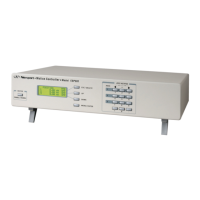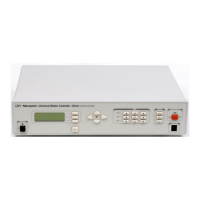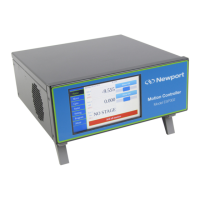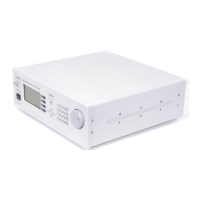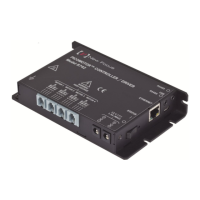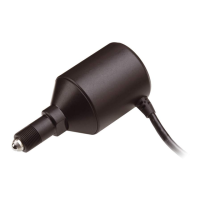XPS-Q8 Controller Software Tools
2. Perform a data gathering with your current parameter settings.
1. Initialize and home the positioner, then move to the desired start position.
2. Define the gathering data: For the stage tuning, it is recommended to gather only
the following error and the current position.
3. Define a typical motion distance.
4. Define the frequency divisor. The frequency divisor defines the sampling rate of
the gathering. A frequency divisor equal to one means one data point is gathered
every servo cycle, or every 125 µs. With most positioners, it is sufficient to set a
value of 10, meaning one data point every 1.25 ms.
5. Define the number of points in relation to the distance, the frequency divisor, the
velocity and the acceleration.
6. Define the velocity, acceleration and jerk time.
7. When done, click “Set & Move”.
3. The gathering results are displayed in a Java applet window. To view the results,
install Java™ Runtime Environment Standard Edition on the host or remote
computer. The XPS has a direct link to download Java™ Runtime when not
installed on the computer.
4. When satisfied with the results, there is no need to tune the stage. If not satisfied,
return to the tuning page and move back to the start position.
5. Next to the Auto-tuning button, there is a Mode field for Auto-tuning. Select “Short
settling” or “High robustness”. Choose “Short settling” to improve the settling time
after a motion or to reduce the following error during the motion. Short settling will
define “high” PID vales for your stage, but there is a risk of oscillation. Choose
61 XPSDocumentation V1.4.x (EDH0301En1060 — 10/17)

